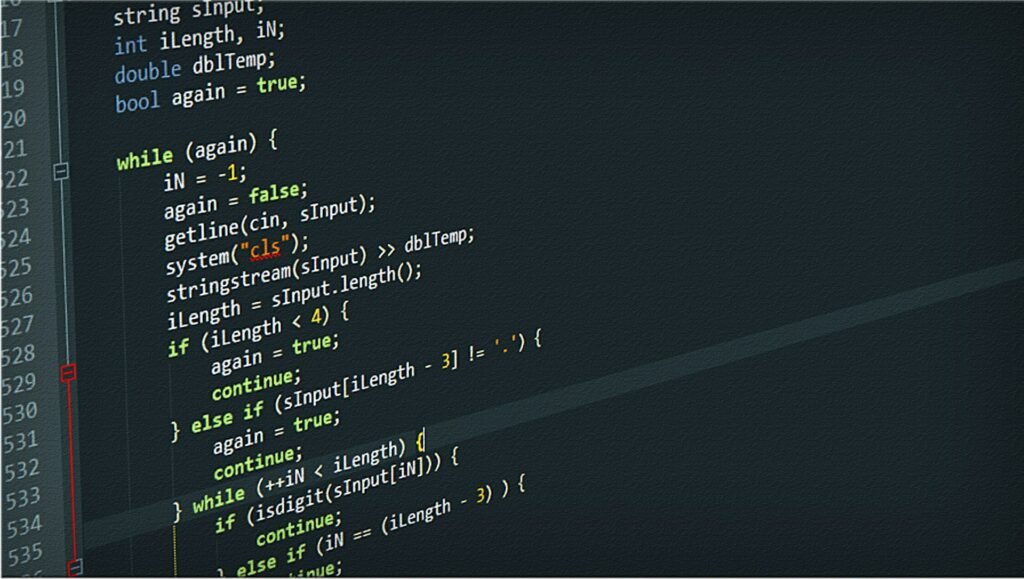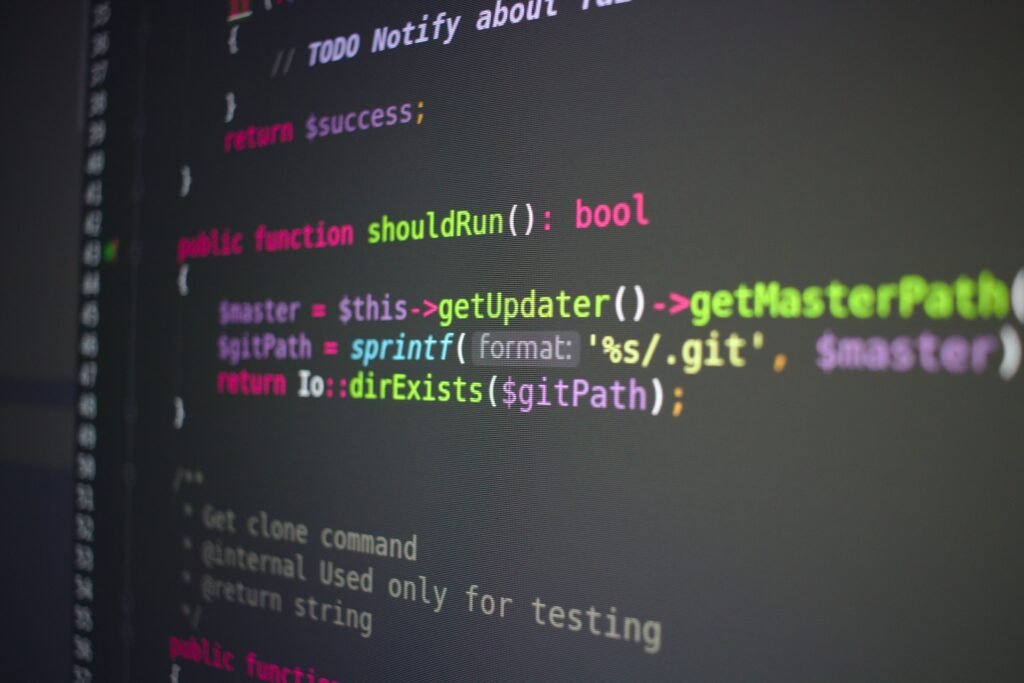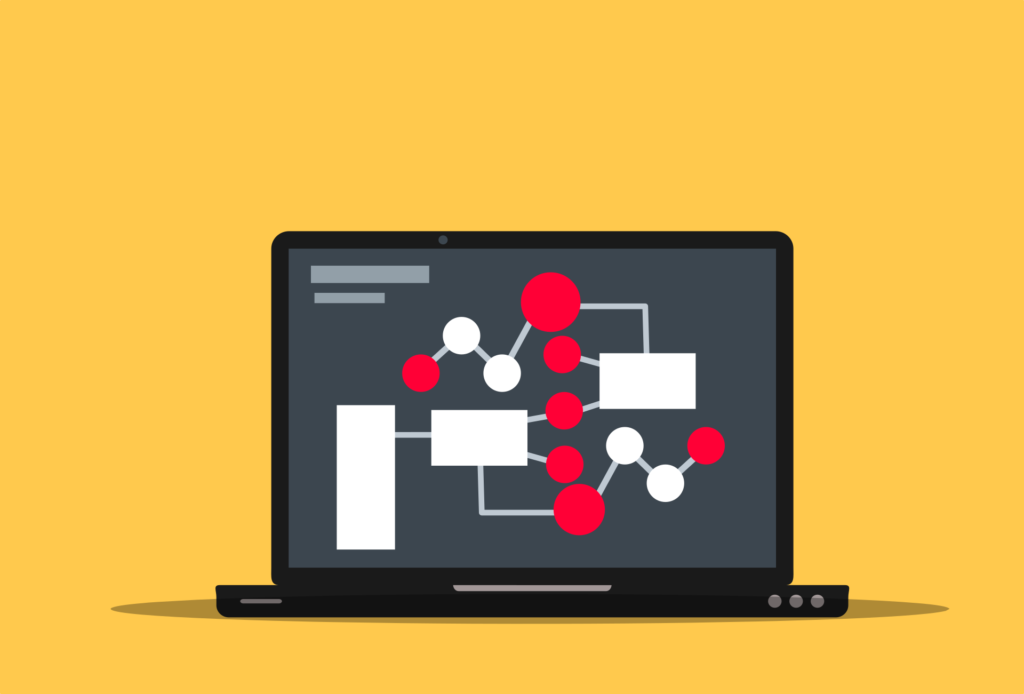Pl/sql
A procedural version of sql called pl/sql (procedural language/structured query language) is used in oracle database to create stored procedures, functions, and triggers. It enables you to combine sql commands with procedural tools to build more sophisticated and effective database applications.

Typically, pl/sql code is run on the database server, which offers superior speed and security compared to running individual sql statements from a client application. It is frequently used to execute data manipulation activities inside the database and to encapsulate business logic.
Here is a quick summary of the main components and characteristics of procedural language/sql.
- Variables and data kinds – to store and modify data within pl/sql programs, you can define variables of various data kinds, such as varchar2, number, date, etc.
- Control structures – pl/sql offers control structures like if-then-else, case, for loop, while loop, and others that let you regulate how your programs execute depending on conditions or iterations.
- Cursors – data from the database is retrieved and modified using cursors. Implicit and explicit cursors are available in pl/sql for working with query results.
- Exception handling – the exception block may be used to handle errors and exceptions. For particular error scenarios, pl/sql has preset exceptions and lets you construct your own exceptions.
- Procedures and functions – procedures and functions are types of reusable code blocks that you may define. Functions return a single value, whereas procedures don’t.
- Triggers – triggers are specialized forms of stored procedures that are automatically carried out in response to particular events, such as the insertion, updating, or deletion of data in a table.
- Packages – logical groups of associated procedures, functions, variables, and cursors are called packages. They offer code encapsulation and modularity.
It provides a strong and flexible technique to create database-centric applications with transactional integrity and performance optimizations. procedural language/sql is typically utilized in oracle database systems.
Remember that procedural language/sql is only compatible with oracle database. Pl/pgsql for postgresql and t-sql for microsoft sql server are examples of procedural languages or extensions that other database systems may support.
Pl sql full form
Pl/sql stands for “procedural language/structured query language”.
Advantage and disadvantage of pl sql
Advantage of pl/sql.
- Integration with sql – procedural language/sql and sql work together smoothly to enable effective and robust database operations. It makes it simple to manage and process data inside the database by allowing you to mix sql instructions with procedural techniques.
- Performance – when procedural language/sql code is run on the database server, network traffic is reduced and performance is increased in comparison to when sql statements from a client application are processed one at a time. Performance is further improved by pl/sql capabilities like bulk processing and optimized cursor handling.
- Security – by letting you write stored procedures and functions and limiting direct access to database objects, procedural language/sql may enhance security. By preventing unauthorized data alterations, this aids in implementing data access regulations.
- Code reusability – procedural language/sql enables the development of reused program components including functions, packages, and procedures. This encourages modularization and reuse of code, cutting down on effort and development time.
- Exception handling – procedural language/sql has strong exception-handling features that let you catch and properly manage problems. To handle certain error circumstances and take the right steps, you may design exception handlers, which will increase the dependability and maintainability of your code.
Disadvantage of pl/sql.
- Database dependency – oracle database systems only support procedural language/sql. Your pl/sql code may need to be rewritten or modified to function with the new database if you need to switch to a different database system.
- Learning curve – for developers who are new to the language, procedural language/sql has its own syntax and programming structures that may take some time to master and grasp. Learning to write effective and efficient pl/sql code might require some time and effort.
- Limited portability – pl/sql programs may not be readily transferrable to other database systems due to their close connection with oracle database. If you need to move your application to a new database platform, this might provide problems.
- Debugging and testing – compared to other programming languages, procedural language/sql code debugging and testing can occasionally be difficult. Effective debugging and testing of pl/sql programs may necessitate the use of specialized tools and methods.
- Maintenance and versioning – over time, especially in big projects, procedural language/sql code may grow complicated and challenging to maintain. To handle code changes and updates effectively, sound version control and code management procedures are required.
Best characteristics of pl/sql
The popularity and efficiency of pl/sql (procedural language/structured query language) for creating database-centric applications are largely due to a number of its features.
These are some of pl/sql’s strongest points.
- Integration with sql – because procedural language/sql and sql are fully connected, powerful and effective database operations are possible. It makes it simple to manage and process data inside the database by allowing you to mix sql instructions with procedural techniques.
- Performance optimization – procedural languagesql offers a number of performance-enhancing capabilities, including caching, cursor management, and batch processing. These characteristics contribute to lessening network traffic and enhancing overall application performance.
- Procedural constructs – procedural language/sql provides a wide range of procedural constructs, such as loops (for loop, while loop), conditional statements (if-then-else), and tools for managing exceptions. Your programs can use these structures to implement complicated logic and control flow.
- Code reusability – by using procedures, functions, and packages, procedural language/sql provides modular programming. These program units may be utilized by several applications, promoting the reuse, consistency, and maintainability of the code.
- Security and data integrity – by allowing business logic to be encapsulated within the database, procedural language/sql improves security and data integrity. You may impose data access limits and uphold consistent data integrity standards by centralizing data modification and validation within stored procedures and triggers.
- Exception handling – procedural language/sql has strong exception-handling features that let you catch and properly manage problems. It facilitates the construction of unique exception types and offers a method for handling both expected and unexpected issues.
- Extensibility and scalability – pl/sql programs may expand along with your application and database as needed. Without making significant modifications to the underlying database structure, you may increase the capability of your database by adding new pl/sql program units or changing existing ones.
- Support for debugging and testing – procedural language/sql provides a number of tools for debugging and testing, including pl/sql debuggers and unit testing frameworks. During the periods of development and maintenance, these tools assist in locating and addressing problems.
- Integration with the oracle ecosystem – procedural language/sql and oracle database are closely related technologies. You may create complete solutions inside the oracle ecosystem by using capabilities like database triggers, oracle advanced queuing, and oracle scheduler.
- Community and assistance – there are a lot of resources, documentation, and assistance available for learning procedural language/sql and resolving pl/sql-related problems thanks to the big and active pl/sql developer community.
Pl sql cursor
A cursor in pl/sql is a named control structure that enables you to obtain and work with data from a query’s result set. It offers a method for repeating through the rows that a select query returns, allowing you to carry out operations on each row separately.
Here is an explanation of how cursors function in pl/sql.
- Cursor declaration – declaration of the cursor a cursor must first be declared before it may be used. The declaration identifies the data types and sizes of variables that will store the retrieved data in addition to specifying the sql query that will be connected to the cursor.
- Opening the cursor – the open statement can be used to open the cursor after it has been declared. Through the execution of the related sql query, a result set that can be retrieved row by row is produced.
- Cursor fetching – using the fetch command, you may fetch rows from the result set one at a time once the cursor has been opened. By doing so, the current row is retrieved from the result set and its data is made accessible for processing.
- Cursor processing – following the retrieval of a row, you can modify the data as necessary. You may do computations, apply conditions, run any relevant business logic, and assign the column values to variables.
- Cursor closing – using the close command, you may close the cursor after processing all of the rows. Memory is freed as well as the cursor’s related resources are released.
Pl sql tutorial
I can give you a quick introduction to pl/sql to get you going. Please be aware, nevertheless, that a thorough pl/sql course would need more detailed materials and practical experience.
Here is a brief summary to serve as a place to start.
Block structure in pl/sql.
- Programs written in pl/sql are made of blocks. The declaration, executable, and exception handling portions make up a block.
- You declare variables, cursors, and other program components in the declaration section.
- The primary logic of your program, including sql statements and procedural structures, is found in the executable portion.
- Errors and exceptions that may happen while the program is running are handled in the exception handling section.
Data types and variables.
- The declare keyword can be used to declare variables. The variable’s name, data type, and optional starting value must all be specified.
- Various data types are supported by pl/sql, including varchar2, number, date, boolean, and others. Additionally, user-defined types and record structures are definable.
Control flow declarations.
- To manage the order of execution in your program, pl/sql offers control flow statements like if-then-else, case, for loop, while loop, and exit expressions.
- If-then-else conditional statements are used to run various blocks of code based on specific circumstances.
- You may repeat a block of code several times by using the loop commands (for loop and while loop).
Cursors.
- Data from the database is retrieved and modified using cursors.
- Create a cursor, open the result set, fetch the rows, and then process the data that was obtained.
- Declare, open, fetch, and close are examples of explicit cursors, while single-row queries automatically utilise implicit cursors.
Handling exceptions.
- An exception handling technique is offered by pl/sql to detect and elegantly manage failures.
- To handle exceptions, use the exception block. For various error kinds, customized exception handlers may be defined.
- Statements like raise, exception_init, when, raise_application_error, and others are used to handle exceptions.
Stored functions and procedures.
- You may build reusable software components known as stored procedures and functions using pl/sql.
- Functions return a single value, whereas procedures don’t.
- To define and save these program modules in the database, use the create procedure or create function statement.
Packages.
- Packages are logical collections of linked operations, variables, functions, and cursors.
- They offer code encapsulation and modularity.
- Complex pl/sql code may be managed and organized by using packages, which associate relevant program elements.
Error logging and exception handling.
- The dbms_output package may be used to show messages, while the dbms_utility package can be used to raise and manage errors. These functionalities are available in pl/sql.
Pl sql editor online
You may develop, execute, and test pl/sql code using a number of online pl/sql editors and ides without having to install any software locally.
Here are a few well-known pl/sql editors available online.
- Oracle live sql – you may develop and run pl/sql code directly in your web browser using oracle live sql, an online platform made available by oracle. With tools including a code editor, script execution, result in visualization, and sharing options, it offers a complete development environment.
You can access it at – https://livesql.oracle.com/
- Db<>fiddle – oracle is supported through the online tool fiddle, which also supports other database systems. It offers a web-based editor where pl/sql code may be written and run. Additionally, it has the ability to build database schemas and tables and supports sql queries.
You can try it out at – https://www.db-fiddle.com/
- Sqlfiddle – another online sql editor that supports multiple database systems, including oracle, is sqlfiddle. The oracle database option allows you to develop and run pl/sql code even though it primarily concentrates on sql queries.
You can access it at – http://sqlfiddle.com/
Without setting up a local development environment, these online pl/sql editors offer a practical approach to test and practice your pl/sql code. They include capabilities like code execution, syntax highlighting, result visualization, and even code sharing.
Always use caution while utilizing online editors since they can have restrictions or security issues. It is always advised to use caution while running code on internet platforms and to keep any private or sensitive information to yourself.
Pl sql developer
Popular integrated development environment (ide) pl/sql developer was created particularly for writing and debugging pl/sql code. It offers an extensive collection of features and tools that boost productivity and simplify pl/sql programming.
Here are a few of the main pl/sql developer features.
- Code editor – the pl/sql developer software includes a robust code editor with syntax highlighting, code formatting, and auto-completion functions. Writing pl/sql programs becomes easier and more efficient as a result.
- Debugger – you may go through your pl/sql code line by line, create breakpoints, and analyses variables with the built-in debugger. During the development and testing phases, it aids in finding and fixing problems.
- Database browser – pl/sql developer comes with a database browser that lets you browse and move around database objects including tables, views, procedures, and functions. Access to object attributes, dependencies, and ddl scripts is made simple.
- Code templates – by creating and using code templates for frequently used code snippets, you may write code faster and with less repetition.
- Sql window – pl/sql developer has a sql window that you may use to run sql queries and see the results of such searches. It offers options for exporting data, various result sets, and query execution history.
- Pl/sql unit testing – pl/sql developer includes support for pl/sql code unit testing. You can measure code coverage, create test reports, and write test cases and run them.
- Version control integration – you can manage and keep track of changes to your pl/sql codebase with the help of pl/sql developer’s support for integration with popular version control systems like git.
- Code profiling – code profiling is a tool that you may use to find performance bottlenecks in your pl/sql code. It gives you information about the amount of time and resources your code uses during execution.
- Sql optimization – pl/sql developer’s sql optimization tools for analyzing and enhancing sql query performance are included in sql optimization.
- Customization – with pl/sql developer, you may alter the ide’s design, toolbars, and keyboard shortcuts to fit your tastes and work style.
The windows-based ide called pl/sql developer was created by all round automations. It offers a complete collection of features and tools that boost the effectiveness and productivity of pl/sql development.
Pl sql development
Writing, testing, and maintaining pl/sql code to create database-centric applications or interact with oracle databases are all part of pl/sql development.
Here are several pl/sql development best practices and steps.
- Gathering requirements – recognize the specifications of your database or application assignment. Identify the pl/sql capabilities, data manipulations, and business rules that must be used.
- Design and architecture – plan the pl/sql code’s organization and structure. To encourage code reuse and maintainability, consider utilizing modular programming approaches such as procedures, functions, and packages.
- Writing pl/sql code – to write pl/sql code, use a text editor or an integrated development environment (ide) like oracle sql developer or pl/sql developer. To maintain uniformity and readability, adhere to naming conventions and code standards.
- Error handling – use exception handling blocks to implement error handling techniques. To preserve the integrity of your data and to deliver relevant error messages, catch and handle exceptions properly.
- Testing – to ensure that your pl/sql code is functional and accurate, create test cases. To assure the desired behavior, test a range of situations, including both typical instances and edge cases.
- Performance optimization – to increase the speed of your pl/sql code, analyze and tune your sql queries, reduce context changes, do away with pointless loops, and use bulk operations where you can.
- Documentation – clearly explain the rationale of your pl/sql code, input/output parameters, and any special considerations or assumptions by documenting it. The code is easier to understand and maintain when there is good documentation.
- Version control – track changes to your pl/sql code using a version control system (like git). This enables you to oversee various revisions, work together with other developers, and roll back changes as necessary.
- Security considerations – follow security best practices, such as preventing sql injection by utilizing bind variables in sql statements, giving pl/sql objects the proper access privileges, and encrypting sensitive data where necessary.
- Maintenance and refactoring – to make your pl/sql code more readable, performant, and maintainable, review and rework it on a regular basis. Improve naming standards, get rid of unnecessary code, and tweak algorithms as necessary.
- Constant learning – keep updated on the most recent pl/sql features, best practices, and advancements by consulting oracle documentation, reading books, participating in forums, and attending appropriate classes or conferences.
Pl sql vs sql
The computer languages pl/sql and sql are both utilized in the oracle database environment, however they have different functions and unique characteristics.
The main distinctions between sql and pl/sql are listed below.
Purpose.
- Relational databases may be accessed using the standard language sql (structured query language). Its main objectives are to query, insert, update, and delete data from database tables.
- A procedural programming language called pl/sql (procedural language/structured query language) expands sql. In the database, it may be used to write procedural code, provide business logic, and create stored procedures, functions, and triggers.
Constructs and syntax.
- Data may be manipulated using declarative sql commands like select, insert, update, and delete. It is mostly used for procedures involving the retrieval and processing of data.
- The procedural language pl/sql also allows subprograms (procedures and functions), variables, loops, conditionals, and exception handling. You may use procedural logic and control flow when writing programs.
Execution of code.
- The database engine runs sql, which is utilized for data definition, management, and manipulation tasks.
- The database engine executes pl/sql, which may communicate with sql commands and database objects. It runs like a chunk of code.
Development of applications vs data manipulation.
- The main purposes of sql include data manipulation tasks such database table querying, adding, updating, and deletion.
- The database’s application development uses pl/sql. It enables the development of database-centric applications and the creation of complicated business logic that may be included in stored procedures and functions.
Logic and procedural constructs.
- Loops and conditional statements are procedural constructs that are not available in sql. It focuses on creating and running sql queries to get or change data.
- You may develop code with control flow and carry out extensive data processing and manipulation using pl/sql, which supports procedural features like loops, conditionals, and exception handling.
Integration.
- In pl/sql programming, sql is incorporated to obtain and alter data.
- Writing procedural code that may use sql statements for data access and modification requires the usage of pl/sql.
In conclusion, pl/sql is a procedural language used for defining application logic within the oracle database environment, whereas sql is used for data manipulation and retrieval. While pl/sql enables you to write complicated procedural code with control flow, variables, and exception handling, sql is primarily focused on retrieving and manipulating data.



































































































































































